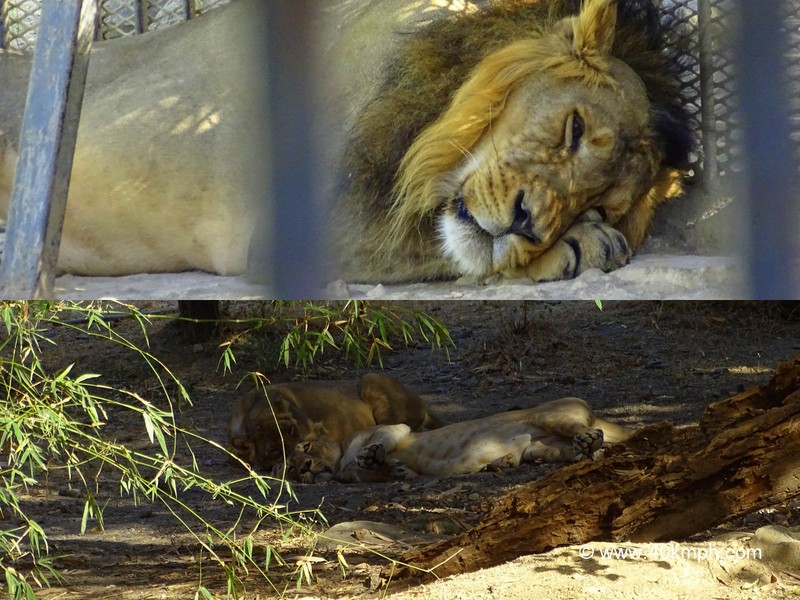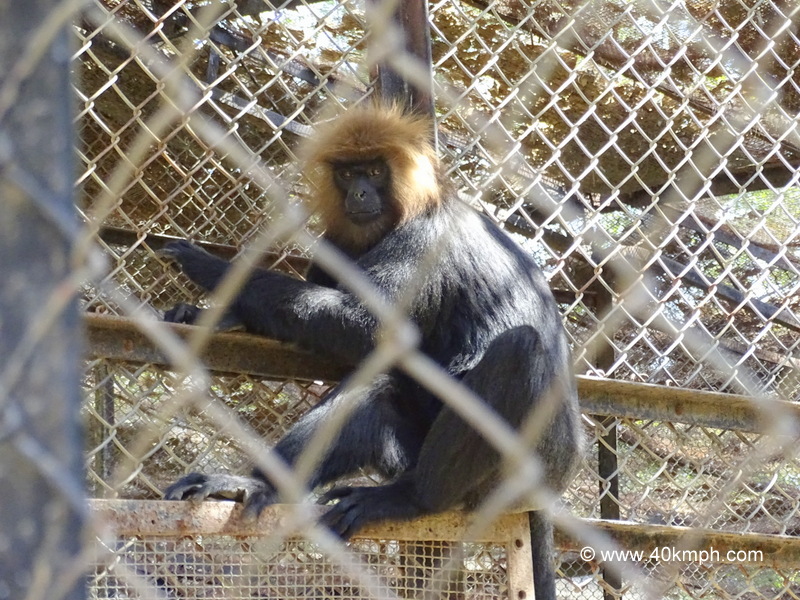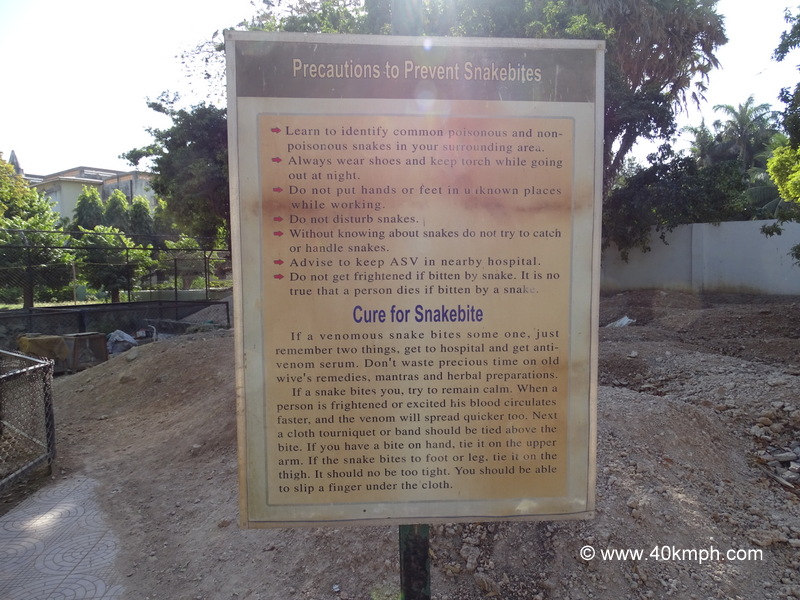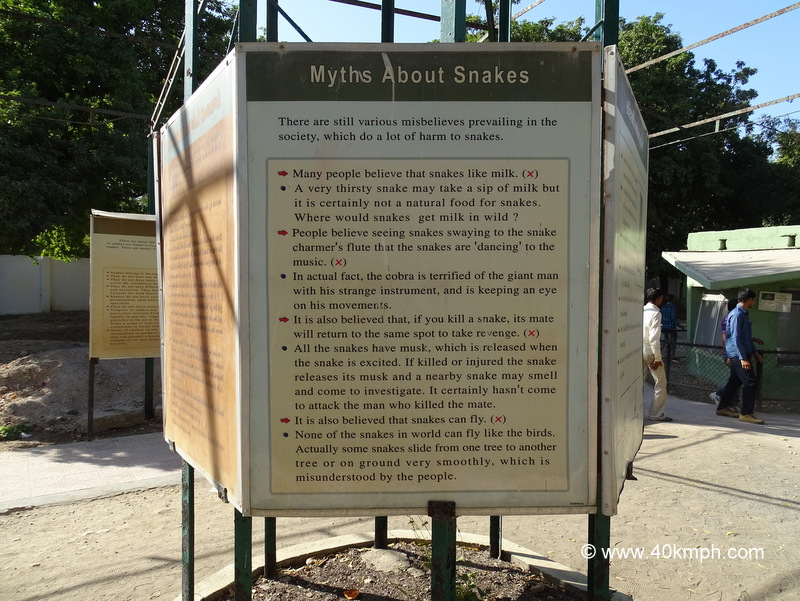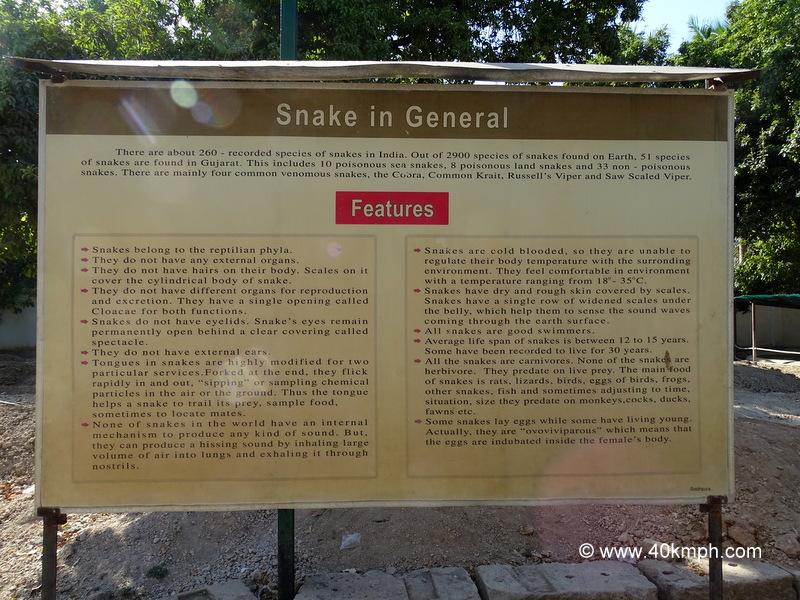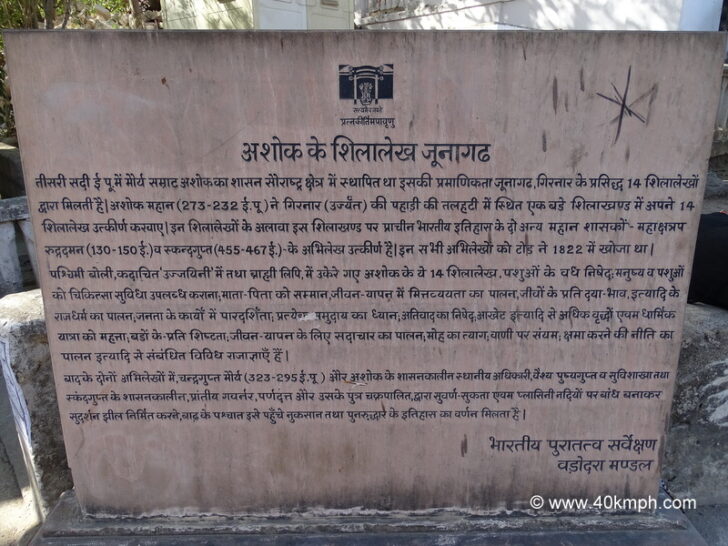Lion and Lioness Resting – This photo was taken at Sakkarbaug Zoo in Junagadh (Gujarat).
White Tiger
White Tiger – This photo was taken at Sakkarbaug Zoo in Junagadh (Gujarat).
Distribution: India, Bangladesh, Nepal and Bhutan.
Food: Carnivorous. Preys upon any animal when hungry (deer like chital and sambar, antelopers, wild boar, Indian gaur, cattle)
Habitat: Prefers dense forest where adequate prey base and water to quench thirst is available.
Features: White Tiger is not a different from Tiger but white tiger has not retained required pigments for natural color although they have retained the strips and elegance. They are active during night and sleeping during day.
(Source: Display Board)
Royal Bengal Tiger in Pond
Royal Bengal Tiger in Pond – This photo was taken at Sakkarbaug Zoo in Junagadh, Gujarat.
Local Name: Wagh, Bagh, Sher, Pattayat Wagh.
Distribution: India, Bangladesh, Nepal and Bhutan.
Food: Herbivorous. Preys upon any animal when hungry (deer like chital and sambar, antelopes, wild boar, Indian gaur, cattle).
Habitat: Prefers dense forest where adequate prey base and water to quench thirst is available.
Features: Tiger is National animal of India and State animal of West Bengal. Crepuscular to nocturnal in habitat. Tiger can swim easily and can be seen near water holes or near kills. It hunt in evening or night. Tiger is found in 17 states. There are a total of 28 Tiger Project Area.
(Source: Display Board)
Leopards
Leopards – This photo was taken at Sakkarbaug Zoo in Junagadh (Gujarat).
Local Name: Dipdo, Tendua
Distribution: all over India, in Nepal, Bhutan, Bangladesh, and Pakistan.
Food: All types of herbivorous like deer, langur and hare, peacock, other bird, reptiles, dog, goat sheep and small cattle.
Habitat: It is found in open to dense forests, hills and undulating terrain, mountains, rocky areas and ravines.
Features: Nocturnal. Found in forest as well as country area. Generally goes in search of the food from evening to morning, sometime also in day times. It can see in the area of human place, village nearby forest at night.
(Source: Display Board)
Nilgiri Langur
Nilgiri Langur – This photo was taken at Sakkarbaug Zoo in Junagadh (Gujarat)
Distribution: Madras, Mysore, and Kerala from the Kanyakumari hills on the southern tip of India.
Food: Flowers, Fruits, Buds, Seeds, Bark, Stems, and Insects, prefers to eat tender leaves.
Habitat: The Nilgiri Hills of the Western Ghats in South India.
Features: The primate has glossy black fur on its body and golden brown fur on its head. It lives in troops of 5 to 15 monkeys.
(Source: Display Board)
Precautions to Prevent Snakebites and Cure
Precautions to Prevent Snakebites and Cure – This photo was taken at Sakkarbaug Zoo in Junagadh (Gujarat).
सर्पदंश से बचने के उपाय
अपने आस-पास के क्षेत्र में आम जहरीले और गैर-जहरीले सांपों की पहचान करना सीखें।
रात में बाहर निकलते समय हमेशा जूते पहनें और टॉर्च रखें।
काम करते समय हाथ या पैर किसी अनजान जगह पर न रखें।
सांपों को परेशान मत करो.
सांपों के बारे में जाने बिना सांपों को पकड़ने या संभालने की कोशिश न करें।
एएसवी को नजदीकी अस्पताल में रखने की सलाह दें।
सांप के काटने पर घबराएं नहीं। यह सच नहीं है कि सांप के काटने से इंसान की मौत हो जाती है।
सर्पदंश का इलाज
अगर किसी को जहरीला सांप काट ले तो बस दो बातें याद रखें, अस्पताल जाएं और एंटी-वेनम सीरम लें। पुरानी पत्नी के नुस्खों, मंत्रों और जड़ी-बूटियों पर अपना कीमती समय बर्बाद न करें।
अगर आपको सांप काट ले तो शांत रहने की कोशिश करें। जब कोई व्यक्ति भयभीत या उत्तेजित होता है तो उसका रक्त संचार तेजी से होता है और जहर भी तेजी से फैलता है। इसके बाद काटने वाले स्थान के ऊपर एक कपड़े की पट्टी या बैंड बांधना चाहिए। यदि आपके हाथ पर काट लिया गया है, तो इसे ऊपरी बांह पर बांध लें। अगर सांप पैर या टाँगे पर काट ले। इसे जांघ पर बांधें. यह बहुत ज्यादा टाइट नहीं होना चाहिए. आपको कपड़े के नीचे एक उंगली डालने में सक्षम होना चाहिए।
(English to Hindi Translation by Google Translate)
Myths About Snakes
Myths About Snakes – This photo was taken at Sakkarbaug Zoo in Junagadh (Gujarat).
साँपों के बारे में मिथक
समाज में आज भी कई तरह की भ्रांतियां प्रचलित हैं, जो सांपों को बहुत नुकसान पहुंचाती हैं।
कई लोगों का मानना है कि सांपों को दूध पसंद होता है। (X)
बहुत प्यासा सांप दूध का एक घूंट पी सकता है लेकिन यह निश्चित रूप से सांपों का प्राकृतिक भोजन नहीं है। जंगल में साँपों को दूध कहाँ से मिलता होगा?
सपेरे की बांसुरी पर सांपों को झूमते देख लोगों का मानना है कि सांप संगीत पर ‘नाच’ रहे हैं। (X)
दरअसल, कोबरा अपने अजीब उपकरण से विशालकाय आदमी से डर गया है और उसकी गतिविधियों पर नजर रख रहा है।
यह भी माना जाता है कि, यदि आप सांप को मार देते हैं, तो उसका साथी बदला लेने के लिए उसी स्थान पर वापस आ जाएगा। (X)
सभी साँपों में कस्तूरी होती है, जो साँप के उत्तेजित होने पर निकलती है। मारे जाने या घायल होने पर साँप अपनी कस्तूरी छोड़ देता है और पास का साँप सूँघकर जाँच करने आ सकता है। यह निश्चित रूप से उस आदमी पर हमला करने नहीं आया है जिसने साथी को मार डाला।
ऐसा भी माना जाता है कि सांप उड़ सकते हैं। (X)
दुनिया का कोई भी सांप पक्षियों की तरह उड़ नहीं सकता। दरअसल कुछ सांप एक पेड़ से दूसरे पेड़ पर या जमीन पर बहुत आसानी से सरकते हैं, जिसे लोग गलत समझते हैं।
(English to Hindi Translation by Google Translate)
Snake in General and its Features
Snake in General and its Features – This photo was taken at Sakkarbaug Zoo in Junagadh (Gujarat).
सामान्य तौर पर साँप
भारत में साँपों की लगभग 260 प्रजातियाँ दर्ज हैं। पृथ्वी पर पाई जाने वाली साँपों की 2900 aप्रजातियों में से 51 प्रजातियाँ गुजरात में पाई जाती हैं। इसमें 10 जहरीले समुद्री सांप, 8 जहरीले जमीन वाले सांप और 33 गैर जहरीले सांप शामिल हैं। मुख्य रूप से चार सामान्य विषैले सांप हैं, कोबरा, कॉमन क्रेट, रसेल वाइपर और सॉ स्केल्ड वाइपर।
विशेषताएँ
➡ सांप सरीसृप संघ से संबंधित हैं।
➡ उनके कोई बाहरी अंग नहीं होते।
➡ इनके शरीर पर बाल नहीं होते। इस पर मौजूद शल्क साँप के बेलनाकार शरीर को ढँक देते हैं।
➡ इनमें प्रजनन और उत्सर्जन के लिए अलग-अलग अंग नहीं होते हैं। . उनके पास एक ही उद्घाटन है जिसे कहा जाता है दोनों कार्यों के लिए क्लोअके।
➡ सांपों की पलकें नहीं होतीं. साँप की आँखें बनी रहती हैं। एक स्पष्ट आवरण के पीछे स्थायी रूप से खुला रहता है जिसे चश्मा कहते हैं।
➡ इनके बाहरी कान नहीं होते।
➡ सांपों की जीभें दो विशेष सेवाओं के लिए अत्यधिक संशोधित होती हैं। अंत में कांटेदार, वे हवा या जमीन में रासायनिक कणों को “घूंट” या नमूना लेते हुए तेजी से अंदर और बाहर फड़फड़ाते हैं। इस प्रकार जीभ सांप को अपने शिकार का पता लगाने, भोजन का नमूना लेने और कभी-कभी साथियों का पता लगाने में मदद करती है।
➡ दुनिया में किसी भी सांप के पास किसी भी प्रकार की ध्वनि उत्पन्न करने के लिए आंतरिक तंत्र नहीं है। लेकिन, वे बड़ी मात्रा में हवा को फेफड़ों में खींचकर और नासिका छिद्रों से बाहर निकालकर हिसिंग ध्वनि उत्पन्न कर सकते हैं।
➡ सांप ठंडे खून वाले होते हैं, इसलिए वे आसपास के वातावरण के साथ अपने शरीर के तापमान को नियंत्रित करने में असमर्थ होते हैं। वे वातावरण में सहज महसूस करते हैं 18° 35°C के बीच तापमान के साथ।
➡ सांपों की त्वचा सूखी और खुरदुरी होती है जो शल्कों से ढकी होती है। सांपों के पेट के नीचे चौड़े तराजू की एक पंक्ति होती है, जो उन्हें पृथ्वी की सतह से आने वाली ध्वनि तरंगों को महसूस करने में मदद करती है।
➡ सभी साँप अच्छे तैराक होते हैं।
➡ सांपों का औसत जीवन काल 12 से 15 वर्ष के बीच होता है। कुछ को 30 वर्षों तक जीवित रहने के लिए दर्ज किया गया है।
➡ सभी साँप मांसाहारी होते हैं। कोई भी साँप शाकाहारी नहीं है। वे जीवित शिकार का शिकार करते हैं। साँपों का मुख्य भोजन चूहे, छिपकलियाँ, पक्षी, पक्षियों के अंडे, मेंढक हैं। अन्य साँप, मछली और कभी-कभी समय के साथ तालमेल बिठाना। स्थिति, आकार के आधार पर वे बंदरों, मुर्गों, बत्तखों, हिरन के बच्चों आदि पर शिकार करते हैं।
➡ कुछ साँप अंडे देते हैं जबकि कुछ के जीवित बच्चे होते हैं। दरअसल, वे “ओवोविविपेरस” होते हैं जिसका मतलब है कि अंडे मादा के शरीर के अंदर मौजूद होते हैं।
(English to Hindi Translation by Google Translate)
About: Ashok ke Shilalekh, Junagadh
Ashoka‘s inscriptions, Junagadh
3rd century BC The rule of Maurya Emperor Ashoka was established in the Saurashtra region in 1500 BC, its authenticity is found in the famous 14 inscriptions of Junagadh and Girnar. Ashoka the Great (273-232 BC) got 14 of his inscriptions engraved on a large stone block located at the foothills of Girnar (Ujrajyant) hill. Apart from these inscriptions, inscriptions of two other great rulers of ancient Indian history – Mahakshatrapa Rudradaman (130-150 AD) and Skandagupta (455-467 AD) are engraved on this rock. All these records were discovered by Tod in 1822.
These 14 inscriptions of Ashoka, engraved in the Western dialect, probably ‘Ujjayini’ and in Brahmi script, include prohibition of killing animals, providing medical facilities to humans and animals, respect for parents, adherence to frugality in living, respect for living beings, Adherence to Rajdharma of kindness, etc., transparency in public works; The focus of each community is related to prohibition of extremism, giving importance to elders and religious pilgrimage over hunting etc., courtesy towards elders, adherence to morality for living, renunciation of attachment, restraint on speech, adherence to the policy of forgiveness etc. are various royal decrees.
In both later inscriptions, local officials of the reign of Chandragupta Maurya (323-295 BC) and Ashoka, the Vaishya Pushyagupta and Suvishakha, and the provincial governor, Parnadatta and his son Chakrapalita, during the reign of Skandagupta, on the Suvarna-Sukta and Plasini rivers there is a description of the history of the creation of Sudarshan Lake by building a dam, the damage caused to it after the flood and its revival.
Archaeological Survey of India
Vadodara Division
(Hindi to English Translation by Google Translate)
During the visit to Bhavnath fair 2015, we saw approx. one km before on the right-hand side Ashok ke Shilalekh. We visited but were told by a caretaker – it is closed temporarily because of some restoration work.
No problem. It is always next time. And I read the ticket charges as below:
Rs. 5 per head is the ticket charge. Rs. 25/- for filming charges.
(ticket exempted for children below 15)
